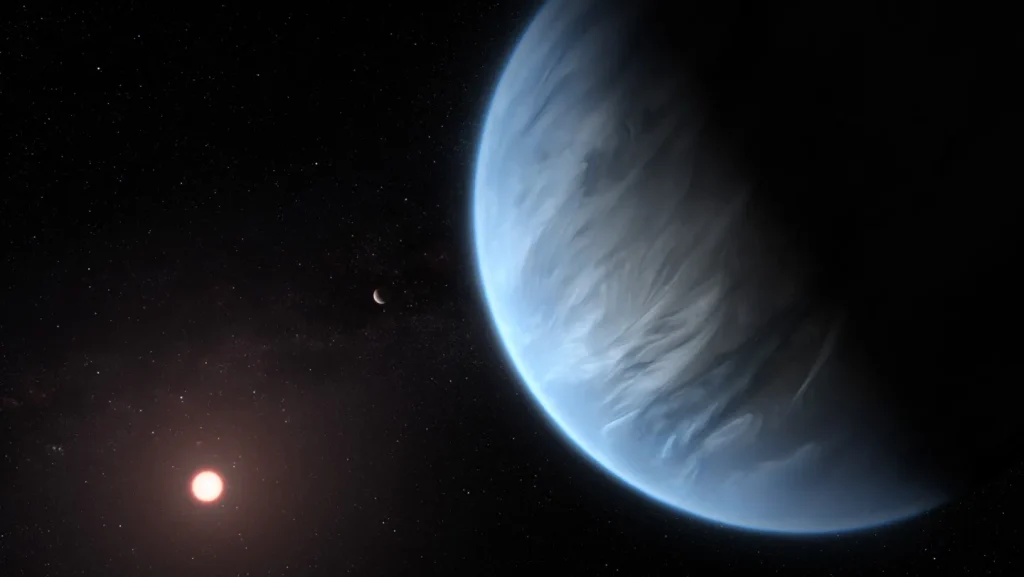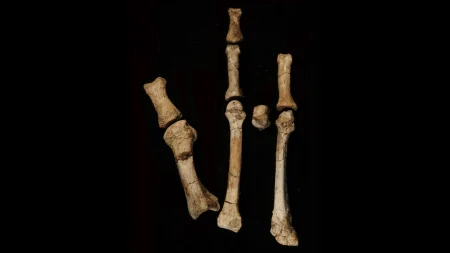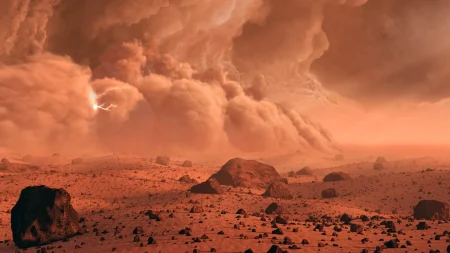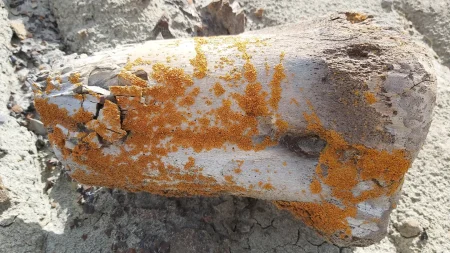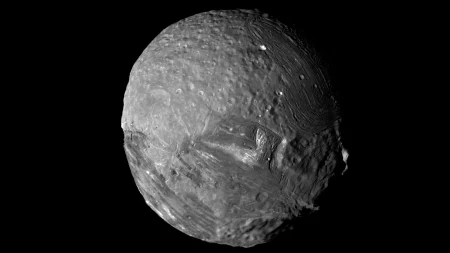Planets May Create Their Own Water Through Internal Chemical Reactions
Recent laboratory experiments have unveiled a fascinating possibility: some planets might generate substantial amounts of water within their interiors, challenging our previous understanding of how water-rich worlds form. This discovery, published in Nature on October 29, could revolutionize our understanding of exoplanet formation and even shed light on Earth’s own water origins.
Scientists have long wondered about the abundance of water on certain exoplanets, particularly those that orbit surprisingly close to their host stars. Traditional planetary formation theory suggests a clear boundary called the “snow line” – planets forming inside this boundary (like Earth and Venus) should be relatively dry, while those forming beyond it (like Saturn and Neptune) can accumulate substantial water and gases. This created a puzzle for astronomers discovering numerous water-rich exoplanets orbiting close to their stars, seemingly inside what should be their systems’ snow lines. The conventional explanation was that these planets must have formed farther out and then migrated inward, but the new research offers a compelling alternative.
The breakthrough came when researchers simulated extreme planetary interior conditions by subjecting olivine – a mineral abundant inside planets – to high-pressure, high-temperature conditions in the presence of hydrogen. Using a diamond anvil cell and innovative pulsed laser techniques to avoid equipment damage, the team observed something remarkable: the hydrogen stripped oxygen atoms from the minerals, forming substantial amounts of water. “There was no rock left. All I had was metal and water,” reported Harrison Horn, a planetary scientist now at Lawrence Livermore National Laboratory who conducted the experiments. The reaction produced an astonishing amount of water – about 18 percent of the initial mass converted to water, thousands of times more than expected for Earth-like planets.
This water-generating process likely occurs at the boundary between a planet’s rocky interior and its gaseous hydrogen envelope. The researchers estimate that planets undergoing this process could develop water content ranging from 5 to 28 percent of their total mass. The resulting worlds would fall into two categories: massive ocean planets covered by deep liquid water, or “hycean” worlds with oceans topped by thick hydrogen atmospheres. Rather than being distinct planetary types, these represent variations along a continuum, with the specific outcome depending on factors like the planet’s size, composition, and proximity to its star.
The findings have significant implications for planetary habitability. While recent studies had suggested that water on hycean worlds might be mostly trapped in their mantles, this new research “moves the water abundance back up,” according to Remo Burn, an astrophysicist not involved in the study. This increased likelihood of surface water might create more favorable conditions for life to develop on these distant worlds. The chemical mechanism is particularly exciting because it doesn’t require special circumstances – just the interaction of common planetary materials under the right conditions.
Perhaps most intriguingly, this discovery may help solve the longstanding mystery of Earth’s own water origins. While today’s Earth lacks the extreme conditions needed for this reaction, they might have existed during our planet’s formation when Earth had a hydrogen-rich early atmosphere. Supporting this hypothesis, researchers have identified tiny water vesicles trapped in ancient deep-Earth diamonds with chemical signatures distinct from surface water. This suggests Earth’s water may have come from two sources: an internal reservoir created through early chemical reactions, and a later component delivered by water-rich asteroids and comets from the outer solar system. This dual-origin theory helps explain some of the puzzling isotopic characteristics of Earth’s water that have long challenged planetary scientists.





